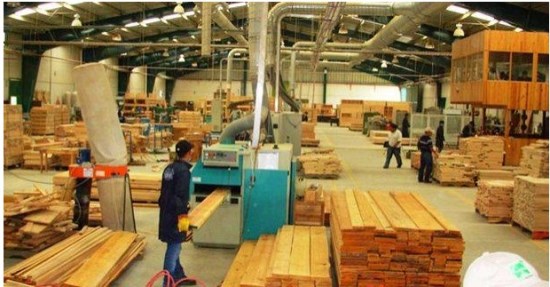
The Malaysian Timber Council (MTC) is focusing its efforts on increasing exports of Malaysian timber and timber products to China.
MTC chairman Datuk Seri Wee Jeck Seng said although China has a huge market, it is difficult to penetrate as it is competitive there.
“China has a big population and many tiered markets. Starting from last year, we’ve been working on having more business-matching sessions and using new approaches through portals to penetrate the market,” he told SunBiz in an interview recently.
Malaysian timber and timber product exports to China are still low currently, said Wee. But China is expected to import more timber and timber products in 2016 to fulfil local demand.
MTC aims to set up a regional office in India by year-end. The council currently has three regional offices – in Guangzhou, Dubai and London.
India is seen as another potential market for the Malaysian timber industry given its expanding middle class, increasing per capita income, rapid urbanisation and growth of the real estate sector. There will be growing demand for value-added downstream products such as furniture, doors and flooring products.
With MTC’s role in the marketing and promotion of the Malaysian timber industry, from upstream to downstream, the regional offices are tasked to look at business opportunities and new markets.
“Regional offices should follow up with business activities, research and development, looking at how to bring sales back to Malaysia, not just working solely on marketing and promotion,” Wee said.
The top ten export markets for Malaysian timber and timber products are Japan, the US, India, Singapore, Australia, Korea, Taiwan, China, the UK and Thailand.
Wee said exporters benefit from the US dollar’s strength against the ringgit, gaining more with foreign exchange translation.
On the Cabinet’s decision to lift the freeze on hiring of foreign workers for four industries that are facing a major labour shortage, including the furniture-making industry, Wee said it will need more time to see whether the situation improves.
“We’re optimistic about exports. We have orders but without the foreign workers, this will impact us. In furniture for example, you cannot rely only on automation. When you want to add value, sometimes the machine cannot do certain things, so we need manpower,” he explained.
The long-term target under the National Timber Industry Policy launched in 2009 is to achieve exports of wood and wood products worth RM53 billion by 2020 and RM16 billion of export value for the furniture industry with value-added achievement of at least 60% to reach the premium level.
Wooden furniture is the largest item in Malaysia’s export of timber products in 2015. The value of wooden furniture rose 14.5% year-on-year to RM7.29 billion in 2015. Malaysia ranks eighth among furniture exporters in the world. Muar is the largest furniture export district in Malaysia, accounting for 50% of the country’s furniture exports.
“If we achieve 12% growth every year , we can achieve RM16 billion in furniture export value by 2020,” said Wee.
Exports of major timber products in the first six months of 2016 totalled RM10.92 billion with the highest value coming from wooden furniture (RM3.60 billion), followed by plywood (RM2.24 billion) and sawn timber (RM1.63 billion).
Many countries have increased the use of wood as the most environmentally friendly material, which augurs well for Malaysian timber product manufacturers. However, stiff competition from other tropical product producers worldwide will always be a challenge for Malaysia. The biggest competitors currently are China, Vietnam, Indonesia, Brazil and some African countries.
(Source: thesundaily.my Author: Ee Ann Nee)























 沪公网安备31010402003309号
沪公网安备31010402003309号